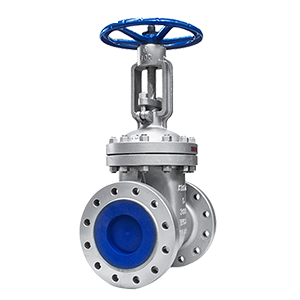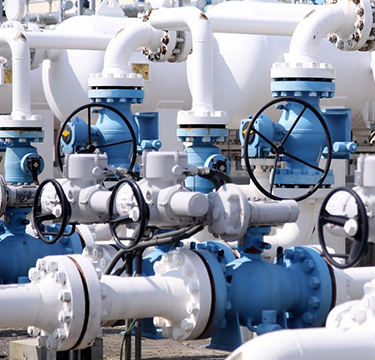E-Mail-Formatfehler
emailCannotEmpty
emailDoesExist
pwdLetterLimtTip
inconsistentPwd
pwdLetterLimtTip
inconsistentPwd

Nachricht
Hier können Sie einen Text beschreiben, den Sie ausdrücken möchten

Understanding High Pressure Gate Valve Design: Key Concepts and Innovations
High pressure gate valves play a crucial role in controlling the flow of fluids in industries where high pressure and temperature conditions prevail. These industries include oil and gas, petrochemical, power generation, and more. The design of these valves is not only a feat of engineering but also an essential factor in ensuring the safety, efficiency, and reliability of industrial operations. In this blog, we’ll explore the key aspects of high pressure gate valve design, delve into the innovations that are shaping the future of this technology, and discuss why these valves are indispensable in modern industry.
What is a High Pressure Gate Valve?
Before diving into the design, it's essential to understand what a high pressure gate valve is. A gate valve, in general, is a device used to control the flow of liquid through a pipe. The “gate” in the valve moves up and down to either block or allow fluid passage. When it comes to high pressure gate valves, these devices are specifically engineered to withstand and operate under extremely high pressures, sometimes exceeding 5,000 PSI (pounds per square inch).
The main components of a high pressure gate valve include:
- Body: The casing that contains the internal parts and holds the valve together.
- Gate: The flat or wedge-shaped part that moves to block or allow fluid flow.
- Stem: A rod that connects the gate to the actuator, allowing it to be raised or lowered.
- Seat: The sealing surface where the gate closes to stop fluid flow.
- Actuator: The mechanism that moves the stem, which can be manual, pneumatic, or electric.
Key Design Considerations
Material Selection: The choice of materials for high pressure gate valve design is critical. These valves often operate in corrosive environments with high temperatures, so materials like stainless steel, Inconel, or other high-grade alloys are frequently used. The material must not only withstand the pressure but also resist corrosion, abrasion, and other forms of wear.
Sealing Integrity: One of the most challenging aspects of high pressure gate valve design is ensuring a perfect seal. Any leakage in a high pressure system can be catastrophic. Designers often use metal-to-metal sealing surfaces, which can endure the high pressures and temperatures better than soft seals. Additionally, advancements in seal technology, such as the use of advanced polymers or composite materials, have made it possible to achieve even better sealing performance.
Gate Design: The gate in a high pressure gate valve can come in different designs, such as parallel or wedge-shaped. The choice between these depends on the specific application. Wedge gates are preferred in situations where a tight seal is required because the wedging action helps create a better seal. On the other hand, parallel gates are often used in situations where the valve will be cycled frequently, as they are less likely to become stuck.
Pressure and Temperature Ratings: Every high pressure gate valve is designed with specific pressure and temperature ratings. These ratings indicate the maximum pressure and temperature the valve can safely handle. Engineers must consider these ratings carefully to ensure that the valve will perform reliably under the operating conditions it will face.
Flow Capacity: The design of a high pressure gate valve must also consider the flow capacity or the amount of fluid the valve can handle. Engineers often use computational fluid dynamics (CFD) to model the flow through the valve and optimize the design for maximum efficiency.
Innovations in High Pressure Gate Valve Design
The design of high pressure gate valves has evolved significantly over the years, thanks to advancements in materials science, manufacturing techniques, and computational modeling.
Additive Manufacturing: Also known as 3D printing, additive manufacturing has opened new doors in valve design. It allows for the creation of complex geometries that were previously impossible or too expensive to produce using traditional manufacturing methods. This innovation is particularly beneficial in the production of custom high pressure gate valves, where specific design features can be tailored to the application’s needs.
Advanced Coatings: The development of advanced coatings has also had a significant impact on high pressure gate valve design. Coatings such as tungsten carbide, chromium nitride, and diamond-like carbon (DLC) can be applied to the valve components to enhance wear resistance, reduce friction, and extend the valve’s operational life. These coatings are especially useful in applications where the valve is exposed to abrasive fluids or where extended service life is critical.
Smart Valve Technology: The integration of sensors and smart technology into high pressure gate valves is an exciting development. These smart valves can monitor their own performance, detect leaks, and provide real-time data on pressure, temperature, and flow rates. This technology not only improves safety but also allows for predictive maintenance, reducing the likelihood of unexpected failures and costly downtime.
Eco-Friendly Designs: As industries move towards sustainability, the design of high pressure gate valves is also evolving to meet environmental standards. Innovations include the development of valves that minimize fugitive emissions, which are leaks of harmful gases into the environment. These designs often incorporate advanced sealing technologies and are built to stricter tolerances to ensure that no harmful substances escape during operation.
The Importance of High Pressure Gate Valves
The importance of high pressure gate valves cannot be overstated. In industries where safety, reliability, and efficiency are paramount, these valves are indispensable. A well-designed high pressure gate valve ensures that fluid systems operate smoothly, preventing leaks, managing flow rates, and withstanding the harsh conditions they are exposed to.
For example, in the oil and gas industry, high pressure gate valves are used to control the flow of oil and gas in pipelines that stretch for thousands of miles. Any failure in these valves could lead to significant environmental damage and financial loss. Similarly, in power plants, these valves control the flow of steam and water under extremely high pressures, ensuring the safe operation of turbines and boilers.
Conclusion
High pressure gate valve design is a complex and fascinating field that combines engineering precision with cutting-edge technology. From material selection to innovative manufacturing techniques, every aspect of the design is crucial to ensuring that these valves can handle the demanding conditions of modern industry. As technology continues to evolve, we can expect to see even more advancements in high pressure gate valve design, making these essential components even more reliable, efficient, and sustainable.

